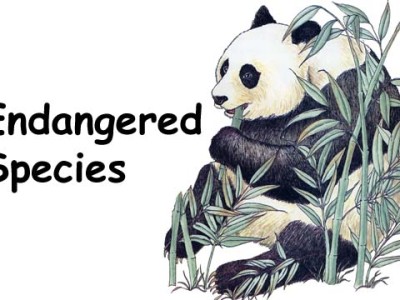biodiversity
Backfilling the federal ESA
AB 1319 is a good first step to responding to efforts to weaken the federal ESA
I wrote this past spring about a proposal by the Trump Administration to eliminate the definition of harm in the regulations implementing the federal Endangered Species Act (ESA), which might eliminate protections from habitat modification for federally listed species. I also noted three different steps California could do to backfill the federal ESA if such …
Continue reading “Backfilling the federal ESA”
CONTINUE READINGThe California ESA and habitat protection
How California can fill in for a reduction in federal protection for endangered speciees
Following up on my prior post about the proposed changes to the federal Endangered Species Act (ESA) regulations that protect against habitat modification, what might California do to protect the species within its border? California currently has 140 federally listed animal species, and 182 federally listed plant species, 19% of the 1684 species listed under …
Continue reading “The California ESA and habitat protection”
CONTINUE READINGWhat’s the Harm?
Tentative thoughts on Trump Administration’s proposed repeal of the ESA regulation defining harm
The administration has proposed revoking the definition of harm in the regulations implementing Section 9 of the Endangered Species Act (ESA). Section 9 is the section of the ESA that prohibits taking a member of a listed species. The change is significant because that definition of harm included, in some circumstances, actions that modify the …
Continue reading “What’s the Harm?”
CONTINUE READINGPrecedent, the Trump Administration, and Endangered Species
A new Trump Administration initiative misinterprets the overruling of Chevron
The Trump Administration’s effort to strip away protections under the Endangered Species Act that had previously been upheld by the Supreme Court. The Administration seems to think they’re entitled to ignore that earlier decision because it was decided under the Chevron test and Chevron has since been overruled. They’re wrong. If it wishes to change the existing interpretation, the agency must give a reasoned argument for doing so that discusses the relevant policy issues, including reliance and the impact of its decision on endangered species.
CONTINUE READINGWhat is a species?
Revisiting a key case in the history of the ESA
This article in the NY Times covers a recent scientific article that concludes that the snail darter, a fish species in the Tennessee River basin that was previously listed for protection under the Endangered Species Act (ESA), is not a species after all. Using a range of genetic analyses, the authors conclude that the snail …
Continue reading “What is a species?”
CONTINUE READINGSix Things to Know about Rights of Nature
More than 500 Rights of Nature laws and policies have been passed globally. Here’s how to make sense of this nascent movement — or movements.
This Fall, I have been co-teaching a course on Rights of Nature with the historian Jill Lepore. This is the first time either of us have taught the subject and it has proven a wonderful opportunity to explore with our students this emerging movement — one that some have praised as “A Legal Revolution That …
Continue reading “Six Things to Know about Rights of Nature”
CONTINUE READINGPearl Harbor Today
82 years after the attack, what is the state of the harbor?
Today is Pearl Harbor Day, the anniversary of the Japanese attack that launched the U.S. into World War II. Those of us who don’t live in Hawaii may not think much about the harbor, but I started to wonder how things were going environmentally there. The geography is more complex than I had expected. I …
Continue reading “Pearl Harbor Today”
CONTINUE READINGSt. Valentine’s Other Assignment
Along with lovers, couples, and marriage, he has a more environmental domain.
St. Valentine is associated with love and romance. He is also the patron saint of beekeepers. It’s unclear why. Maybe it’s the association of honey with happiness and affection, especially in the age before chocolate reached Europe. Or maybe it’s because of the “birds and the bees” as models for explaining sex to children. Whatever …
Continue reading “St. Valentine’s Other Assignment”
CONTINUE READINGHow California (and the World) Get to 30×30
COP15 in Montreal ended with a pledge to protect 30 percent of the planet by 2030. UCLA student analysis shows what we can learn from California’s own plan.
By Ashley Anderson, Elana Nager, and Madeline Ward As 2022 wound down, the United Nations Biodiversity Conference (COP 15) convened in Montreal. The conference ended with around 190 of the world’s nations adopting the Kunming-Montreal Global Biodiversity Framework, which establishes four goals and twenty-three targets to be achieved by 2030. The most prominent of these …
Continue reading “How California (and the World) Get to 30×30”
CONTINUE READINGScenarios and Uncertainty
Imagining different futures can be the best way to think through options when we don’t know the odds.
In environmental law, we’re often operating at the limits of knowledge about the natural world and human behavior. Climate change is well understood in some ways, but it will set off a chain of reactions that we only partly understand. It’s also difficult to predict the future of ecosystems, future energy prices, technological changes, and …
Continue reading “Scenarios and Uncertainty”
CONTINUE READING









